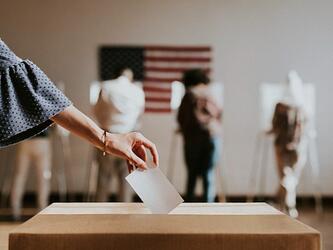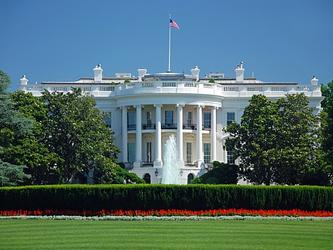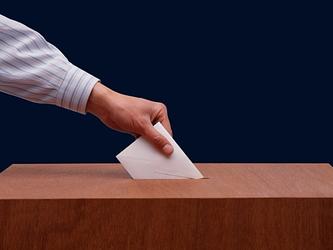Pollsters reflect on tight US election
In the end the anticipated ‘blue wave’ did not materialise, but the Democrats and Joe Biden remain on course for a narrow victory in the US presidential election over Donald Trump. Some states are yet to announce their results, with Pennsylvania, North Carolina, Nevada and Georgia the most critical to the outcome, but with 264 of the 270 electoral college votes he needs, Biden requires just a single victory in the battleground states.
However, the election was not a good one for the US polling industry. Pollsters had been heavily criticised for failing to spot Trump’s 2016 election victory, and in 2020 a predicted Biden landslide did not arrive, with some states such as Ohio and Florida leaning much more heavily to the Republicans than previously billed.
We asked several pollsters and political analysts in the US and overseas about the results.
Amelia Showalter, chief executive officer and co-founder, Pantheon Analytics
“Genuinely, I’m surprised that polling was off by several percentage points in certain states. If you don't know the polling industry, you might think after 2016 that polls can never be trusted. But when pollsters explained all the ways that they had learned from their mistakes, I believed them. Especially since polling did better in 2018.
“Fixing some of the 2016 problems (not adjusting for education, for example) doesn’t prevent other unseen problems from arising. I hope pollsters will do some thorough analysis to identify this year’s mistakes – and then figure out how not to be always playing catch-up in the future.”
Jean-Marc Leger, founding president, Leger
“It was not a good night for pollsters. Trump’s voter turnout means they will do better than the polls in the national vote and in many states. It is more than ‘shy’ Trump voters. It is also that the voting turnout was very high in the US.
“We need the final results to evaluate the accuracy of the polls. We know that in some states – Florida, Wisconsin, Michigan – we were not in the margin of error. The main issue in the US is you have 100m voters who voted early, which is twice what it was in 2016, and most of them are Democrats.”
Sarah Feldman, data journalist, Ipsos US
“A few of our expectations have proven to be true – results from ballots cast on election day favour Donald Trump, while the votes still being counted in battleground states are mostly from mail-in ballots and will likely favour Joe Biden. Ultimately, this race has once again come down to a handful of states in the Midwest and Sun Belt, and the razor-thin margins we are seeing shows just how polarised our country is at the moment.
“The fundamental difference between 2016 and now is that at this point four years ago, we knew who our next president would be. Covid-19 completely changed how we voted this year.”
Joshua Ulibarri, partner, Lake Research Partners
“Trump distorts everything. In 2017, 2018, and 2019, polling got back on track and was more predictive again. But in the two elections with Trump there has been a distortion, and I think that has something to do with the kinds of voters he attracts who want to support him at the ballot box but won’t say they are supporting him in polling interviews.
“Trump has never had majority support, nor had a majority of the public supporting his job performance. He has also never dropped below 40% in the polls – he has always hung around. There has been remarkable consistency – even during Covid-19, after impeachment, and after police violence and the protests.”
Adam Drummond, associate director, Opinium
“I feel the experience of 2016 prepared people for the possibility of a surprise. It’s clear that there are again issues with state-level polling, although Joe Biden seems to be on course to win the national popular vote much as Hillary Clinton did. The challenge seems to be the increasing disconnect between that fact and how they perform in the electoral college.
“Biden’s failure to win back large numbers of those who first voted for Trump in 2016 in swing states is why he is struggling to convert a clear popular vote lead into a guaranteed win in the electoral college.”
Deborah Mattinson, founding partner, BritainThinks
“Once again, it’s the state level polls which have been patchy, to put it charitably. It’s odd because I assumed that after the disasters of over-estimating Hillary Clinton last time, some errors might have been corrected. This will be a hard reputational hit to come back from.
“There’s also a question of confirmation bias in media and commentator analysis. Just as in the ‘red wall’ here in the UK, it is clear that the political class is out of touch with the values and beliefs of ordinary voters”
Ben Page, chief executive officer, Ipsos Mori
“The polling in the swing states is not as accurate as many would have liked it to have been. There have been coverage issues – crudely, people in Florida who are more likely to vote Democrat were more likely to take part in the polls.
“The challenge for the American research industry will be to look and see what was the systematic bias that was going on. Maybe you need more shocks – in the UK, we had the 2015 election and 2016 referendum.
“Maybe what has happened is that Trump has energised his base so much in a country that typically has low turnouts that he got more of them to the polls than predicted.”

We hope you enjoyed this article.
Research Live is published by MRS.
The Market Research Society (MRS) exists to promote and protect the research sector, showcasing how research delivers impact for businesses and government.
Members of MRS enjoy many benefits including tailoured policy guidance, discounts on training and conferences, and access to member-only content.
For example, there's an archive of winning case studies from over a decade of MRS Awards.
Find out more about the benefits of joining MRS here.














0 Comments